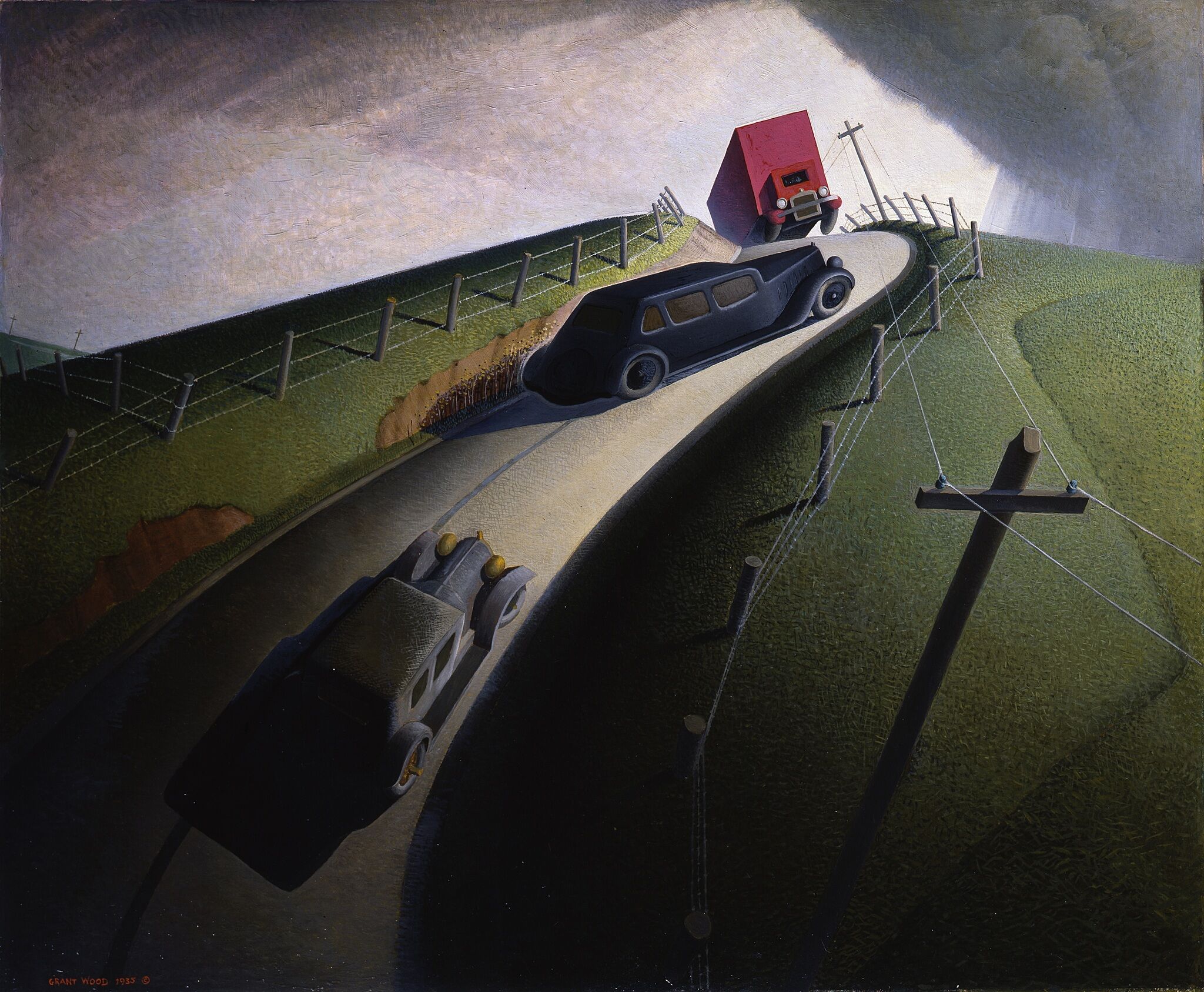Grant Wood: American Gothic and Other Fables | Art & Artists
Mar 2–June 10, 2018
Grant Wood: American Gothic and Other Fables | Art & Artists
Late Work
8
By 1935, Grant Wood began to streamline his landscape style, replacing the ornamental frills and mannerisms of his earlier work with broad, reductive shapes. He retained this stylistic simplification as he shifted to more patriotic subject matter in response to his worry that America had lost its will to defend itself against fascism, which was on the rise in Europe. He envisioned a series of paintings of American folktales, beginning with Parson Weems’s fictional account of George Washington as a child confessing to having chopped down his father’s cherry tree.
Faced with Nazi victories over the Allies in the first years of World War II, Wood turned his attention to depicting what he called the “simple, everyday things that make life significant to the average person” in order to awaken the country to what it stood to lose. He completed only two works in this second series—Spring in the Country and Spring in Town—before his death from pancreatic cancer on February 2, 1942, two hours before he would have turned fifty-one.
Death on the Ridge Road, 1935
In Death on the Ridge Road, Wood replaced the ornamentation and stylized details of his early landscapes with broader expanses of color. Depicting out-of-control vehicles on a steep, winding road, the painting’s contorted space, contrasting light, and foreboding storm clouds convey an overwhelming sense of dread. Wood began work on the composition in 1934, a few months after his friend Jay Sigmund, a Cedar Rapids poet, was involved in a car accident; its anxious mood was likely amplified by the impending death of Wood’s mother.

